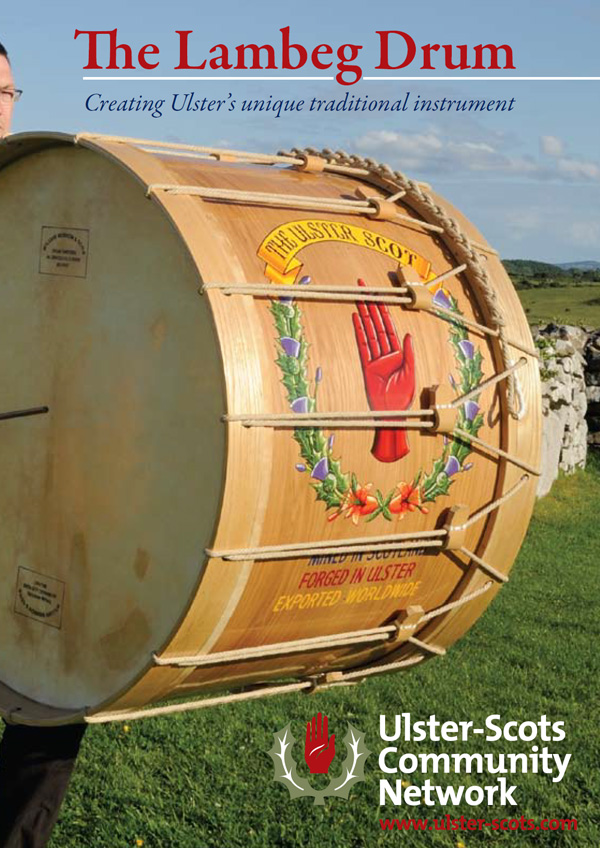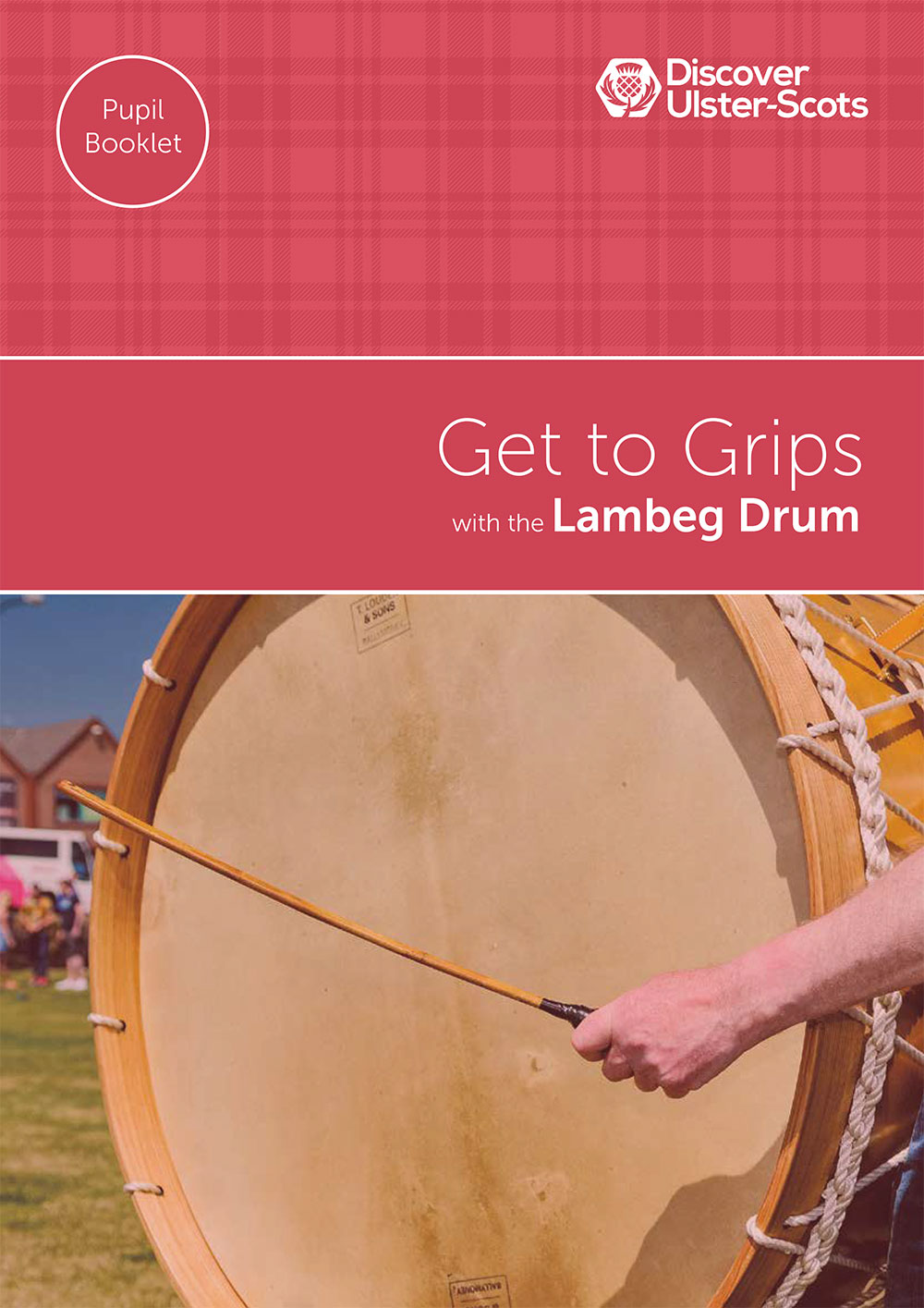Lambeg Drum
The Lambeg drum is a percussion instrument unique to Ulster.
It is one of the largest (and loudest) acoustic instruments in the world. Although large drums exist in other cultures and music traditions, these typically have a low bass pitch. The lambeg drum has a unique ‘crack’ due to the highly tensioned skins.
Each drum is commissioned and hand crafted by a single craftsman who steams wood (oak is normally preferred) and shapes it to make the shell of the drum. The ‘hoops’ that secure the skins are typically made of oak.
The skins of the drum are traditionally goatskin and before playing, they are tensioned using 15 ‘buffs’ on ropes that are laced through hoops on each side of the drum. It is critical that each ‘head’ (side) has the same pitch and tone. This is done by ear before the drum is played and can involve striking the wooden hoops in places with a mallet. When not being played the tension on the heads is released.
An artisan tradition
Only a small number of artisan drum-makers exist in Ulster with the skills to make these unique instruments.
The skills are passed ‘hands-on’ from one generation to the next, often through families.
Each drum-maker has his own personal methods of making the drum and these are often kept secret by the maker. For example, many have personal recipes for glue that have been passed down through generations and most will have tools and equipment made by or for a particular maker and these too will have been passed down through the generations.
Being bespoke, each drum has a unique intonation and character.
History and evolution
It is believed that this style of drum came to Ireland during the Williamite War in the late 17th Century.
At this time the drum would have been smaller in diameter, two-sided and played vertically on one head with sticks, accompanying the wooden fife. Over time, the drums grew in size to increase their volume for use in battle and the two-sided playing approach recognised today was adopted. In the late 19th Century, ball-ended sticks were replaced by canes of malacca or bamboo, giving the characteristic’ crack’ sound.
The new sound was reportedly first heard in the County Antrim village of Lambeg, close to Belfast and it is believed this is how the great drum came to be christened a ‘Lambeg’ drum.
Early drum heads were made from cow, deer and even donkey hides, but all lacked the consistency of tension which goat skin offered.
Playing the drum
For competitions, tensioning the drum may be done gradually over a period of days.
The player wears the drum using a leather neck strap. Typically the length of the strap will be adjusted so that the sticks strike across center of the drum. The drum is struck using curved canes, with the curves pointing inwards that the skin cannot be easily damaged. The heads are positioned on the drum in such a way that the canes strike across the strongest part of the skin.
Drums are played using traditional patterns or rhythms called ‘time drumming’.
These are rarely notated. Instead, they are learned and passed down through generations aurally. The rhythms are complex, requiring huge concentration from skilled drummers, particularly when played in groups.
The lambeg is often accompanied by the traditional wooden fife although this is not always the case.
The rhythms (referred to as ‘times’) are unique to specific areas of Ulster and are named after the area they are found such a ‘Kells and Conor time’, ‘Ballymoney time’, Tandragee time’.
The drum is played using curved canes made from Malacca cane.
The drums are often played in ‘drumming matches’. These are drumming competitions in which drummer’s skills are judged by experts and winners declared as ‘champion drummers’.
In ‘Rhythms of Ulster’ Dr David Lyttle has transcribed these drumming rhythms or ‘times’ into standard musical notation.
Related Documents

The Lambeg Drum
Creating Ulster's unique traditional instrument.
3.28 MB

Get to Grips with the Lambeg Drum
This book is one of a series that supports the Ulster-Scots Agency music tuition programmes.
7.75 MB

Get to Grips with the Lambeg Drum (Pupil Booklet)
This book is one of a series that supports the Ulster-Scots Agency music tuition programmes.
7.67 MB








